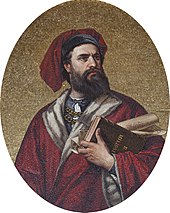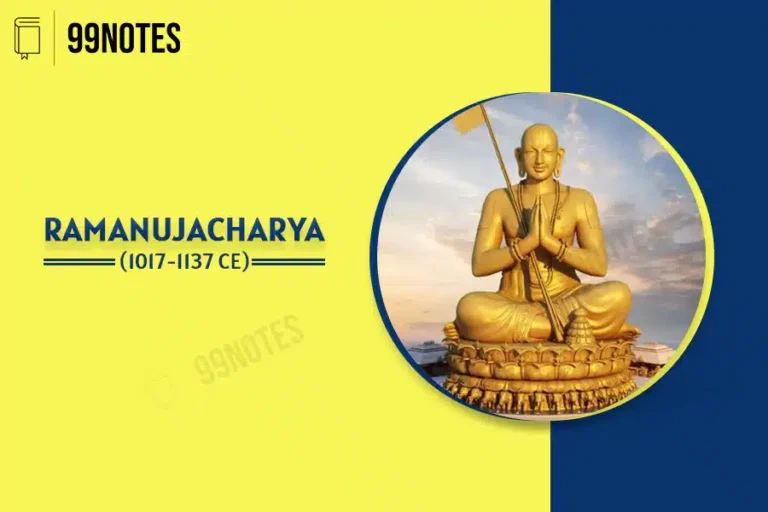Marco Polo- Art and Culture Notes
Marco Polo

Marco Polo travelled the Silk Road, a medieval trade route connecting Europe to Asia, between 1271-95, spending seventeen of those years in China as a prominent figure in the flourishing Mongol empire under Kublai Khan.
His account is very important for understanding commercial activities during the late 13th century. He has also described the life and conditions of common people.
Marco polo was a foreign traveller from?
- Marco Polo was a Venetian traveller who toured Asia for over 24 years. His itinerary included Persia, Mongolia, China, Japan, South East Asia and India.
-
His travel account inspired future voyagers like Christopher Columbus and Vasco da Gama.

Marco Polo’s Early Life:
- Marco Polo was born around 1254 into a wealthy Venetian merchant family, though the actual date and location of his birth are unknown.
- His father (Niccolo) and his uncle (Maffeo) were successful jewel merchants who spent much of Marco’s childhood in Asia.
- When he was young, his mother died; therefore, young Marco was primarily raised by his extended family.
- Marco spent about six years in Constantinople (now Istanbul, Turkey).
Marco Polo was a foreign traveller from?
Marco Polo was a Venetian traveller who toured Asia for over 24 years. His itinerary included Persia, Mongolia, China, Japan, South East Asia and India.
- His travel account inspired future voyagers like Christopher Columbus and Vasco da Gama.
- Marco Polo in India (1289–1293):
- He stopped in Kerala and Tamil Nadu.
- He visited India during the rule of Kakatiyan queen Rudramadevi (r. 1263 to 1289/1295 CE). He describes Mutfili (or Motupalli) as a flourishing city and sea-borne trade centre.
- Marco Polo called the Pandya kingdom ‘the richest and most splendid province in the world’, which, together with Ceylon, produced most of the pearls and gems of the world.
Marco Polo’s cultural account of India:
- In the Kerala kingdom, he was shocked to see that “everyone was naked”, including the king. For decency, they wore only a strap of cloth. However, the king wore ornaments of gems, gold, pearls and emeralds on various parts of his body.
- Marco Polo noticed the practice of sati among certain groups.
- People venerated the cow and dubbed their houses with cow dung. They didn’t eat beef, except for a group with low social status, who were not allowed inside the premises of holy places.
- Marco Polo also wrote about devadasis, who used to dance and sing a song in a temple and traded sexual favours for money.
- Marco also wrote that dark skin was preferred by Indians. Marco wrote that when the child was born, they rubbed oil on her skin to make her grow darker because people were more highly esteemed than the lighter-skinned ones.
- He was also drawn to local arts and crafts and assessed their commercial value.
- He mentions paan chewed by Indians. Spitting paan juice on another person would lead to a duel between the offender and the complainant with the king’s orders. The two fight until one is killed.
- He notes that Indians were hygienic people, bathing twice daily, not touching food without washing their hands, and never eating using their left hands. In addition, they would not drink from another’s vessel if others’ lips had contaminated them.
- He gives an account of the Jain monks, noting that they did not kill any animal, even a fly, a flea, or anything.
- He describes the sleeping beds of nobles and great folks as made of very light cane work and hanging from the ceiling through cords. The arrangement helped them to avoid the bite of poisonous spiders and other insects.
- India bred no horses and imported them from Aden and beyond. The foreign merchants would not send veterinaries or teach the handling of horses to the Indians, due to which most of the horses died during the shipment, as the merchants wished for.
He referred to the Ramappa temple of the Kakatiya empire as “the brightest star in the galaxy of temples”.



![Panchayatana Style Of Temple Architecture [Complete Upsc Notes] | Updated January 12, 2026 Panchayatana Style Of Temple Architecture [Complete Upsc Notes]](https://www.99notes.in/wp-content/uploads/2023/03/panchayatan-style-99notes-upsc-768x512.webp)


